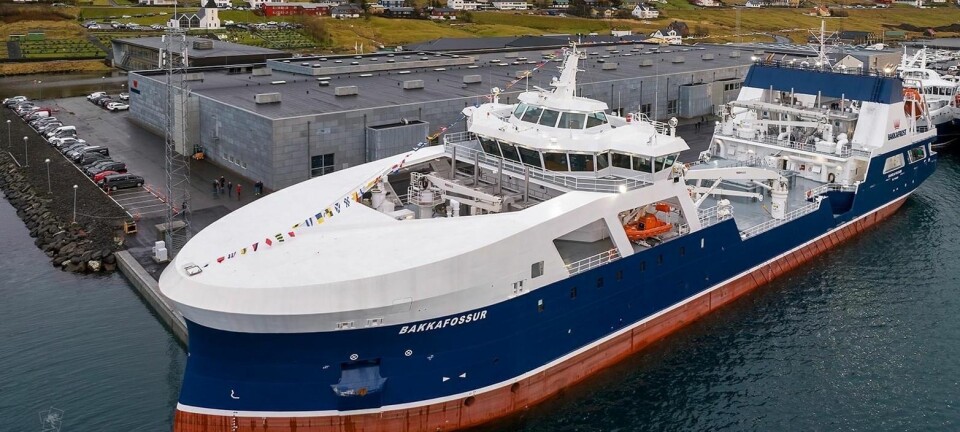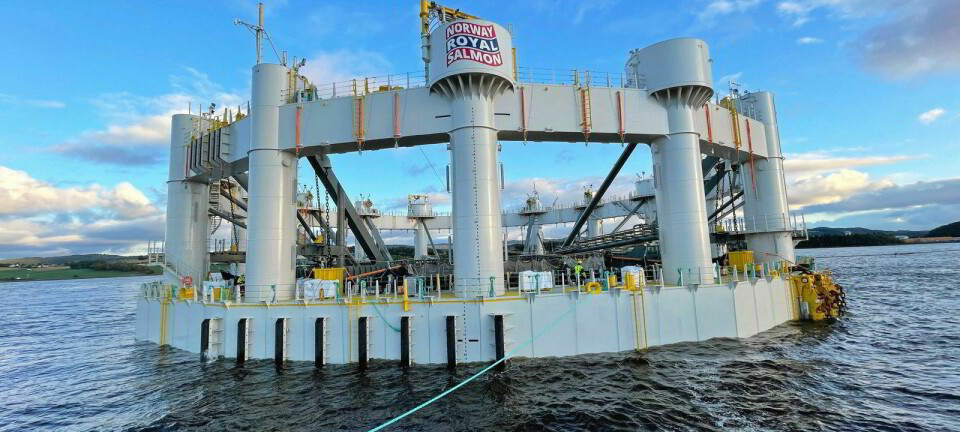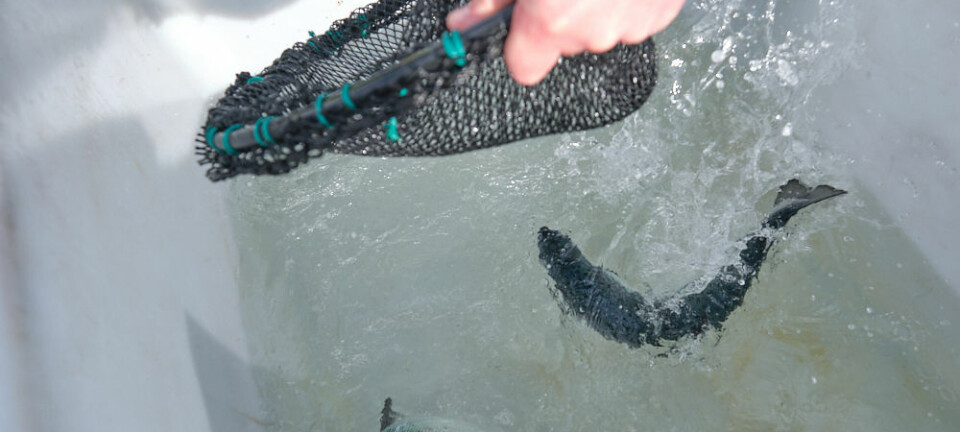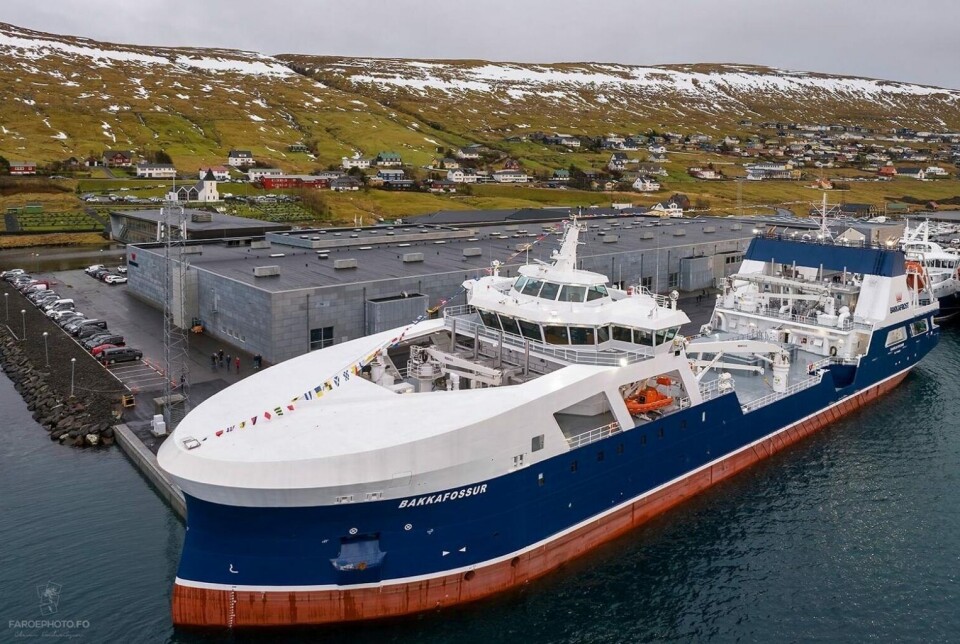
Bakkafrost plans 10,000m³ wellboat for Scottish salmon farming operation
Vessel listed in £571 million spending plan outlined at capital markets day
Salmon farmer Bakkafrost Scotland is to get a large new wellboat as part of Faroese parent company Bakkafrost Group’s DKK 5 billion (£571.5 million) capital expenditure between now and 2030.
The wellboat will have similar size and capabilities to Bakkafrost’s flagship vessel, Bakkafossur, a 109-metre giant which has four wells with a total capacity of 7,000m³ of sea water and other tanks can hold 3,000m³ of fresh water produced on board.
In addition to the five diesel-electric engines, Bakkafossur is equipped with large batteries, ensuring an approximately 20% increase in energy efficiency.
Fresh water
The vessel is equipped with reverse osmosis technology that can produce 6,000m³ of fresh water a day, adding significant freshwater treatment capacity to Bakkafrost’s operations in the Faroe Islands.
Speaking at a capital markets day in the Faroes today, Bakkafrost chief executive Regin Jacobsen said the company planned to order two new vessels, one for Scotland that’s similar to the Bakkafossur, and an even larger wellboat for use in the Faroes. This vessel will be 30% bigger.
Bakkafrost has allocated DKK 1.6bn (£183.4m) in its CAPEX plan to meet the cost of the new wellboats, although Jacobsen pointed out that the company had not yet put the vessels out to tender, so costs could be lower. They will also take three years to be built.
"Even if we signed [a contract] at the end of this year, the first operation cannot be until 2029," said Jacobsen, who said that the vessels would ensure that Bakkafrost had the necessary treatment capacity as it expands production from a guided 97,000 gutted weight tonnes this year to a planned 162,000 gwt in 2030.
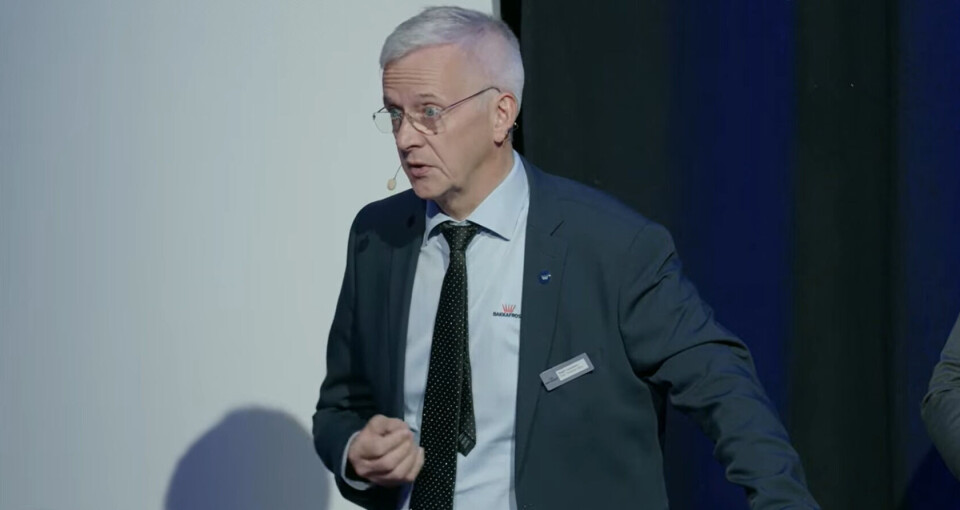
Significant improvements
Earlier, Jacobsen had explained the importance of wellboats for controlling sea lice with freshwater treatments.
"When we look at operations in the Faroe Islands over time, we see that one of the drivers that has improved our operations significantly over the past two to three years is our ability to control sea lice and the welfare of the fish," Jacobsen told financial sector professionals visiting the company.
"We were in a bit of a challenging period from around 2016 to 2020. Bakkafossur and the dual freshwater treatment (six hours in a freshwater bath, then a gentle turbulence to dislodge lice that hadn't already dropped off) has significantly improved our ability to balance fish welfare and operation. The sea lice number is one of the key parameters which indicates this."
Lower mortality
Mortality caused by treatments was also lower, Jacobsen said.
"When we do a freshwater treatment, there is very, very little extra mortality. Sometimes it is zero, but normally very low - 0.1% to 02%. Compared with other treatments, this is very, very low, and we also see a very good fish welfare during treatments.
"So, that's been one of the drivers that has been important to us. This has helped us to increase average weight of our harvested fish. When the fish is healthy and strong, then it grows better and has a lower feed conversion ratio."
Owning the boats
Jacobsen said Bakkafrost now owns a fleet of vessels that were a technology driving the industry's ability to develop, and explained why the company felt ownership was better and cheaper than leasing vessels, although two currently in use for Bakkafrost Scotland are on hire.
"By owning this technology, we have an ability to develop the technology, to be part of that development," said the Bakkafrost boss. "I see very clearly that when we own it, we have much better knowledge. We were the first in 2015 to introduce freshwater treatments; Hans A Bakka was the first freshwater treatment boat in the world.
"When we were building Hans A Bakka, there was a person here in the Faroes who came to me and told me about this freshwater treatment, and as we were building we converted Hans A Bakka to a freshwater treatment boat."
A gamechanger
"Bakkaforssur is the largest freshwater treatment boat producing freshwater on board. That's been a significant gamechanger," said Jacobsen. "We see also with our crew that they're really committed and driving changes."
Jacobsen said Bakkaforssur had become a "cornerstone" in the Faroes operation, securing fish welfare, biological stability, and production efficiency. "We have reduced mortality, improved survivability significantly, we are minimising treatment mortality and also minimising treatments because it's so efficient - normally we get about 90% efficiency on sea lice removal."
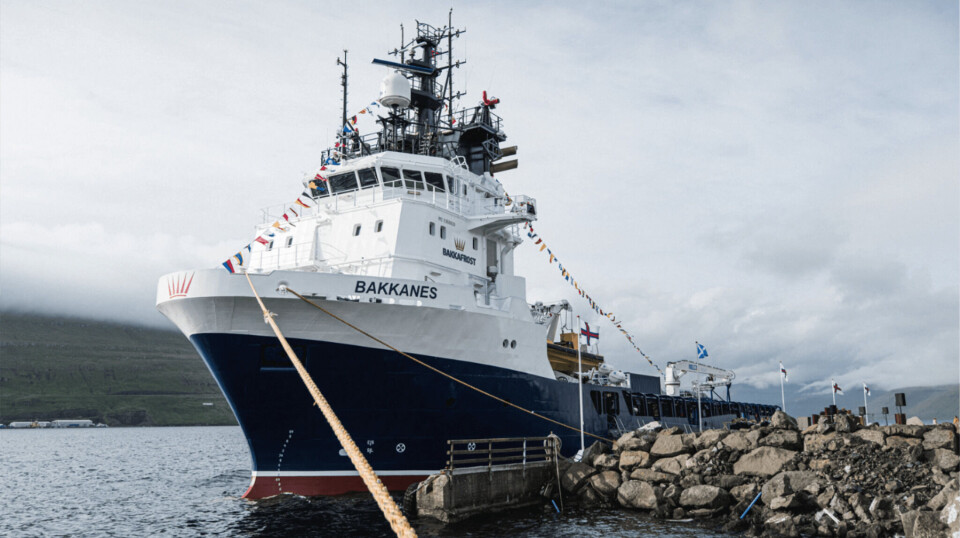
The MS Martin, a former platform supply vessel (PSV) bought by Bakkafrost and initially converted into a delousing vessel, was repurposed as a dedicated transfer vessel for the 460 gram smolts the company is producing in the Faroes, and has been successful.
"That's really good utilisation of the capacity. At low cost we can make changes and use the equipment for different purposes," said Jacobsen.
Bakkafrost is now doing the same thing with the another converted PSV,
Bakkanes, which will be used as a smolt transfer vessel in Scotland.
"Martin was transferred a year ago, and has now been in operation for eight months, very successfully. Bakkanes will now go to Scotland with the same equipment. Bakkanes is normally working in Scotland, but now will take care of the smolt transfer," said Jacobsen.
Dual treatments
Bakkafrost Scotland has reported improved biological development in Scotland since the arrival of the 4,000m³-capacity wellboat, Ronja Star, in late September 2022.
The vessel, on a long-term contract from Sølvtrans, is equipped with freshwater treatment capacity as well as an innovative in-line freshwater-based sea lice removal system and can efficiently do dual treatments for gill-related issues as well as sea lice removal in one operation.
The operation proved to be efficient and Bakkafrost decided to implement the same systems on its other Scotland wellboat, the 2,500m³-capacity Ronjafisk, as well as on the Bakkafossur.
